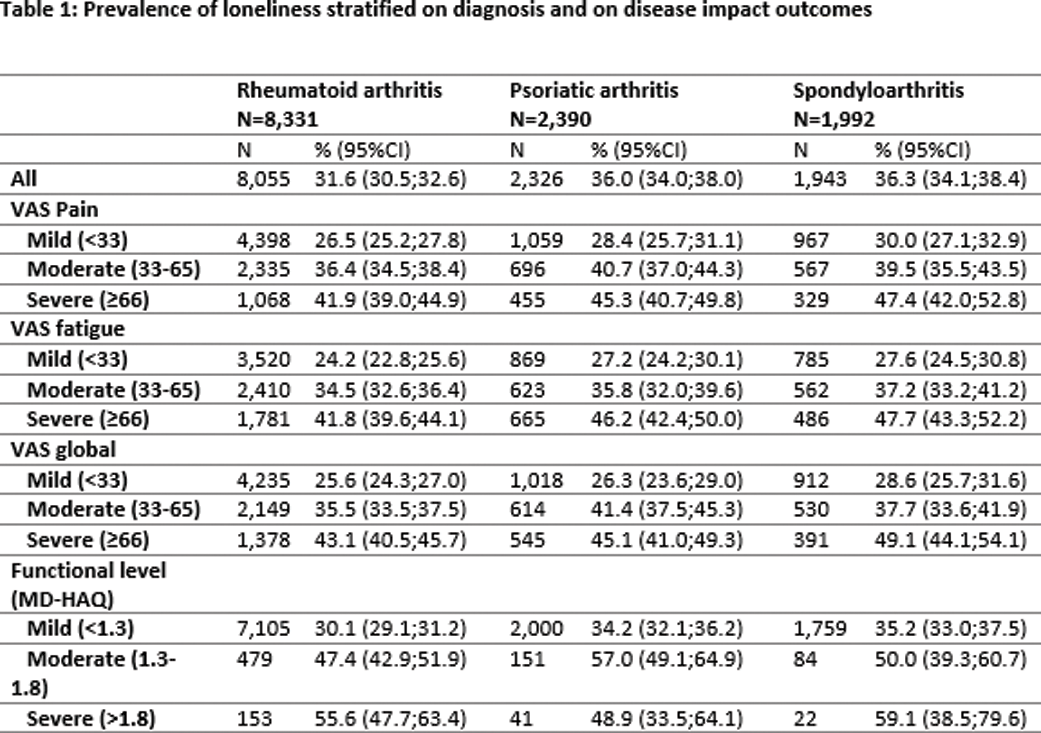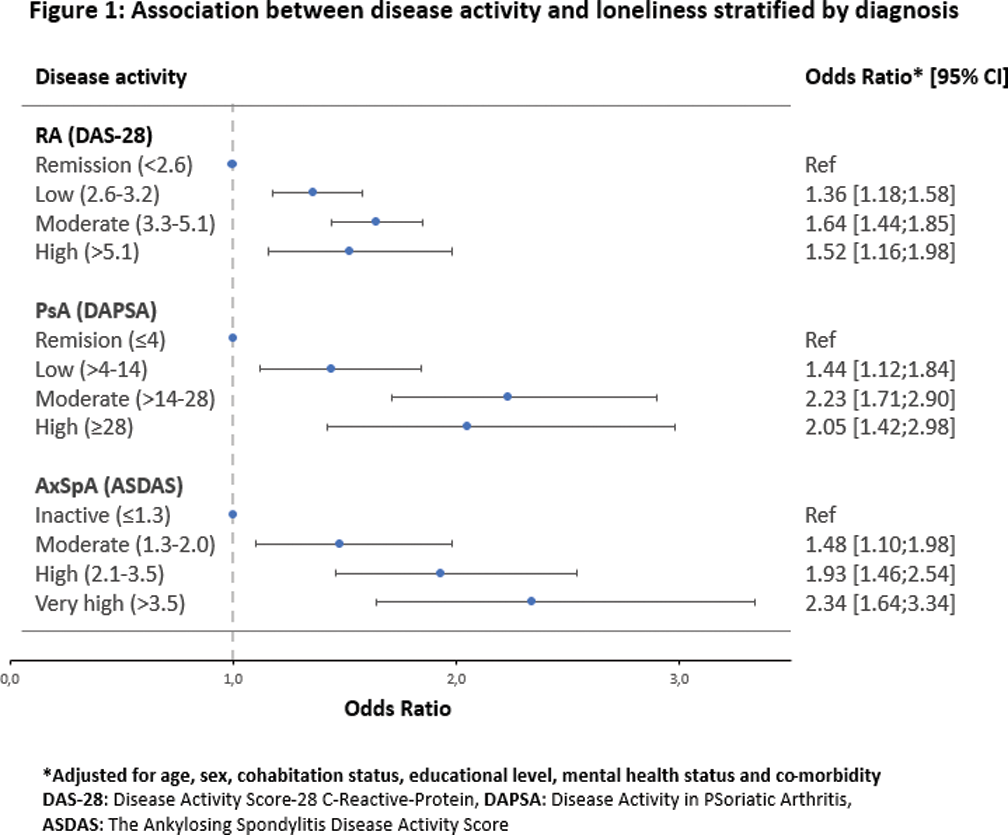

Background: Existing evidence points towards an association between loneliness and poor health, including increased mortality [1]. However, little is known about the prevalence and impact of loneliness in inflammatory arthritis (IA).
Objectives: The objective of this study was to investigate the prevalence of loneliness among patients with IA. Further, we aimed to identify socio-economic and disease-related factors associated with loneliness. We hypothesized positive associations between loneliness and high levels of disease activity, pain, fatigue, global assessment, anxiety and depression, and low levels of function.
Methods: We used data from a nationwide questionnaire survey [2], comprising information on socio-demographics, mental health status and social relations among 12,713 patients with IA (rheumatoid arthritis (RA), psoriatic arthritis (PsA), and axial spondyloarthritis (AxSpA)). Data were subsequently linked to clinical data from the Danish Rheumatology Database, DANBIO, and the Danish National Patient Registry. Loneliness was measured by the question: “ Are you ever alone, although you would prefer to be together with others ?”. The association between loneliness and disease activity and disease impact (fatigue, pain, and patient global assessment (PGA) and functional level) was estimated using multivariable logistic regression adjusted for age, sex, cohabitation status, educational level, mental health status indicated by the Hospital Anxiety and Depression Scale, and co-morbidity following the Charlson’s Comorbidity Index. Data regarding disease activity and disease impact was identified in DANBIO. Measures of disease activity were used according to diagnosis. Impact of symptoms was determined by four patient reported outcomes: pain, fatigue and PGA measured on a Visual Analog Scale (VAS) (0-100) and functional level by the Multidimensional Health Assessment Questionnaire (MD-HAQ).
Results: Across all three diagnoses, about one-third reported loneliness. The prevalence was lowest for patients with RA compared to patients PsA and AxSpA (Table 1). The prevalence of loneliness was highest among AxSpA patients with high levels of depression symptoms (66.2% (60.0;72.8)). Patients with higher levels of pain, fatigue and PGA and severe limitation in functional level where more likely to report loneliness (Table 1). A clear dose-response relationship was observed between loneliness and disease activity (Figure 1).


Conclusion: The prevalence of loneliness is considerable among patients with IA. Positive associations were observed for all included measures, showing a well-defined dose-response relationship between disease activity and loneliness. Therefore, it must be considered an important target for future interventions and a care focus point.
REFERENCES: [1] DOI: 10.1073/pnas.2306819120.
[2] DOI: 10.1136/rmdopen-2023-003412.
Acknowledgements: Patient Research Partners and DANBIO.
Disclosure of Interests: Sofie Bech Vestergaard: None declared, Bente Appel Esbensen: None declared, Julie Midtgaard: None declared, Pernille Fevejle Cromhout Novo Nordisk A/S., Bente Glintborg Pfizer, AbbVie, Sandoz, Mette Aadahl: None declared, Annette de Thurah: None declared.